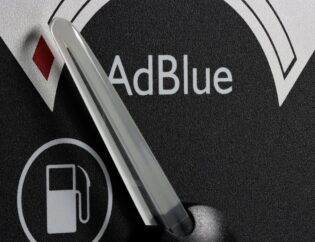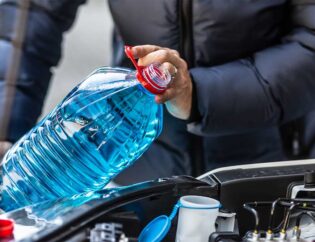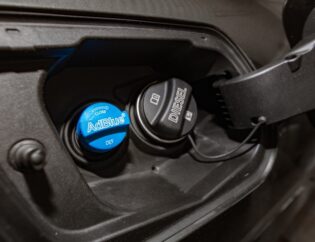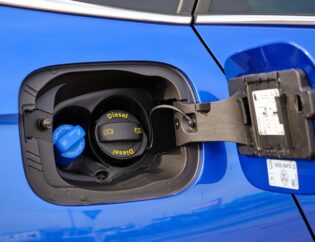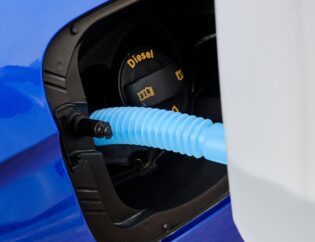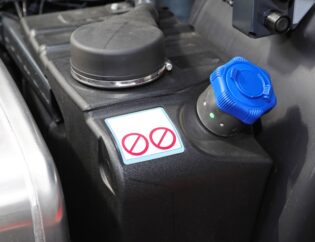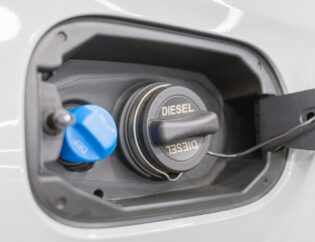
The main components of DEF are urea and deionized water. Urea makes up around 67% of the solution, while deionized water makes up 33%. When injected into the hot exhaust, the urea breaks down into ammonia, which reacts with the NOx on the surface of a catalyst. This chemical reaction converts the harmful NOx into harmless nitrogen gas and water vapor.
DEF was introduced in 2010 to meet stricter diesel engine emissions regulations. All new diesel trucks and engines for on-highway use are now required to utilize SCR and DEF injection to lower NOx emissions to near-zero levels. DEF has become an essential fluid for the operation of modern diesel vehicles.
Over 90% of NOx emissions are effectively removed by the catalytic converter by introducing tiny amounts of DEF into the exhaust stream. This provides major environmental and health benefits by reducing smog and respiratory problems caused by these pollutants. DEF is a simple but important solution for making diesel engines cleaner and more sustainable. Keep reading this blog post by Azure chemical to find you how long does DEF last.
Contents
How Does DEF Work?
Diesel Exhaust Fluid (DEF) reduces nitrogen oxide (NOx) emissions from diesel engines. DEF is an aqueous urea solution injected into the exhaust stream of diesel engines.
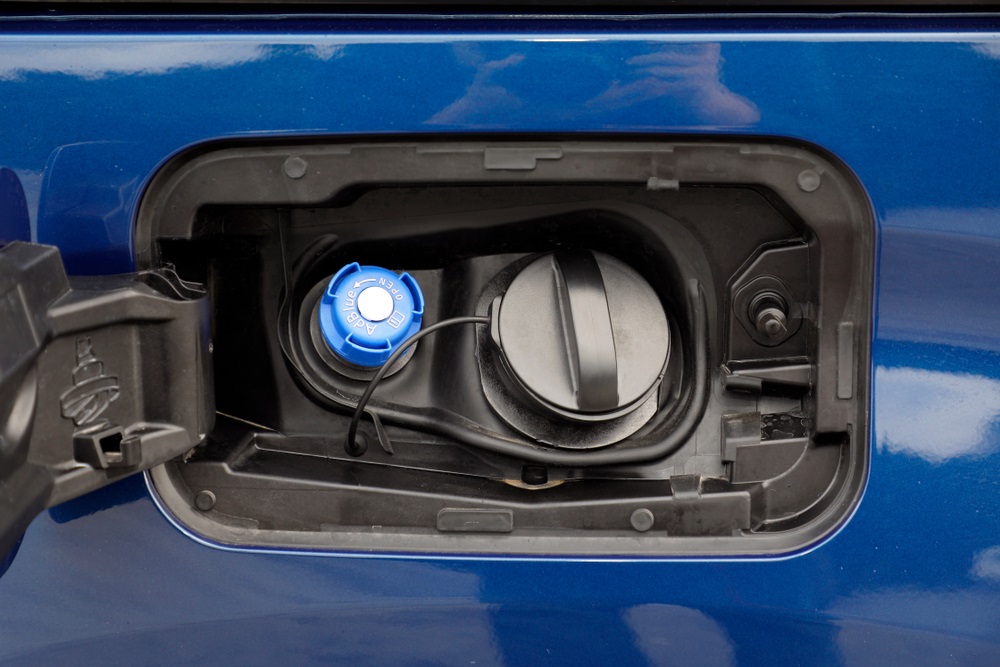
The urea in DEF reacts with the NOx gases, breaking them down into nitrogen, water vapor, and small amounts of carbon dioxide. This chemical reaction is known as selective catalytic reduction (SCR). During SCR, the urea breaks down into ammonia, which reacts with the NOx gases over a catalyst.
By converting the harmful NOx gases into harmless nitrogen and water, DEF dramatically reduces the amount of NOx emitted from the tailpipe. Using DEF can reduce NOx emissions by up to 90 percent.
The ability of DEF to significantly reduce NOx has allowed diesel engine manufacturers to meet much tighter emissions regulations over the past decade. All modern diesel engines have DEF systems to control NOx and comply with emissions standards.
DEF Storage
Diesel exhaust fluid (DEF) is stored in a separate tank from diesel fuel in diesel vehicles. The DEF tank size can vary, but it averages around 5 gallons.

DEF tanks are made from polyethylene or polypropylene plastic. These plastic materials are chosen because DEF can degrade when exposed to metals like aluminum, steel, cast iron, copper, lead, zinc, or their alloys. The plastic tanks help keep the DEF pure and stable.
Storing DEF in a separate tank also prevents accidental mixing with diesel fuel, which can damage the vehicle. The DEF tank is specially designed with a smaller opening than the diesel tank to prevent misfueling.
Some key considerations for DEF storage:
- Keep the tank sealed when not refilling to prevent contamination.
- Periodically inspect tanks and lines for any leaks, which can lead to crystallization as DEF dries out.
- Refill the DEF tank promptly to prevent low levels and vehicle performance issues.
Proper DEF tank storage and maintenance help maximize the usable life of the fluid.
DEF Consumption Rates
Consumption of diesel exhaust fluid varies depending on the engine and vehicle usage. As a general guideline, DEF consumption is around 2-3% of diesel fuel consumption. For example, if a vehicle travels 10,000 miles at six mpg fuel economy, it would consume approximately 50 gallons of diesel. At a 2-3% DEF consumption rate, that same 10,000 miles would use around 1.5 gallons of DEF.
DEF consumption correlates closely with fuel consumption because DEF injection rates are controlled by the engine computer based on driving conditions. More fuel burned means more DEF fluid injected to treat the exhaust. High engine loads, frequent acceleration/deceleration, and high speeds generally lead to higher DEF consumption. Going easy on the throttle and maintaining steady highway cruising can help minimize DEF usage.
Consumption rates also depend on engine size – a larger diesel engine will consume DEF faster than a smaller engine over the same distance. Newer diesel engines optimized for DEF systems use the fluid very efficiently. Older trucks may have higher DEF consumption until they are retired from service.
Knowing your vehicle’s average DEF consumption rate helps predict how often you’ll need to refill the tank. Monitoring DEF levels and refilling before you run empty is important to avoid drivability issues and maintain emissions compliance.
DEF Refilling
Diesel exhaust fluid is designed to be easily refilled by the owner as needed. Most diesel vehicles have a separate fill tube specifically for adding DEF, often marked by a blue cap.
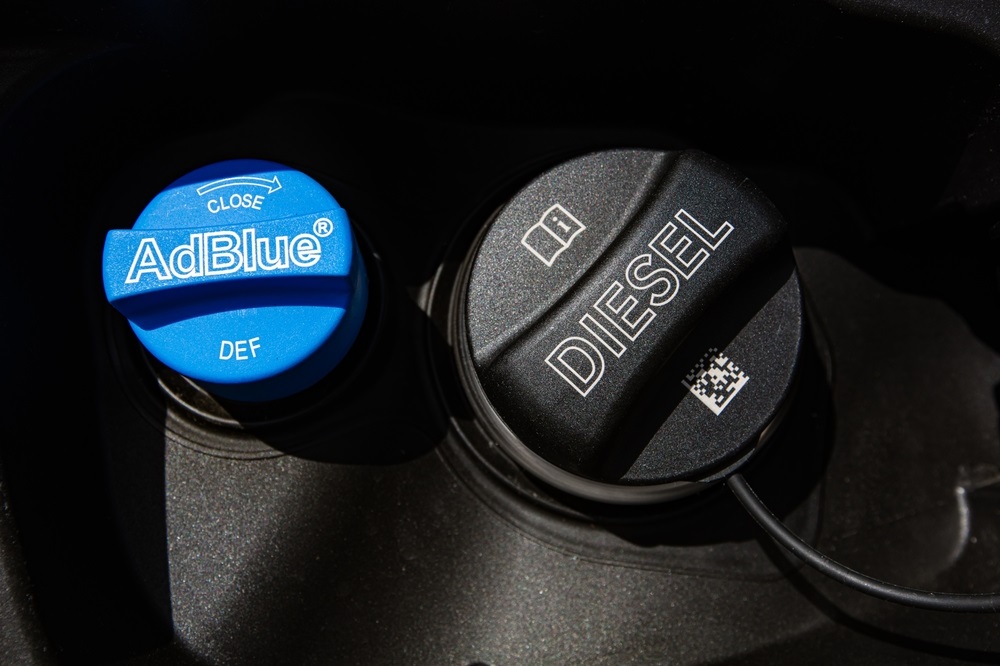
This allows the DEF tank to be conveniently refilled at the same time as routine oil changes and other maintenance without needing to access the main diesel fuel tank.
When refilling the DEF tank, it is important to avoid contamination from dirt, debris, or other liquids. Use the designated DEF fill tube only. The blue cap helps differentiate it from the fuel fill. Not all vehicles have a blue cap, so check the owner’s manual if unsure. Adding even small amounts of diesel fuel or other contaminants can degrade the DEF and cause the emissions system to clog or malfunction.
DEF Shelf Life
DEF has a shelf life of approximately 1 year when stored properly between 10°F – 90°F. The DEF solution contains urea and deionized water, which can start to degrade when exposed to excessive heat or cold over time.
If stored at a too high temperature, the urea in DEF can begin to break down into ammonia, leading to corrosion issues in the DEF system. Storing DEF at extremely cold temperatures below 10°F can also cause the urea to crystallize and freeze. Both heat and cold degradation will reduce the effectiveness of the DEF in treating nitrogen oxide emissions.
DEF degraded from improper storage temperatures may not trigger an immediate warning light but can silently cause buildup and clogs in the DEF dosing system over time. Drivers may eventually experience blocked DEF lines, damaged sensors, or errors and alerts from the emissions control system. For optimal DEF system health and performance, following the manufacturer’s recommendations for storage and replacing DEF fluid after 12 months is best. Properly stored DEF has a reliable shelf life, while extreme temperatures greatly accelerate degradation.
DEF Contamination and Degradation
Diesel exhaust fluid can become contaminated and start to degrade over time due to various factors:
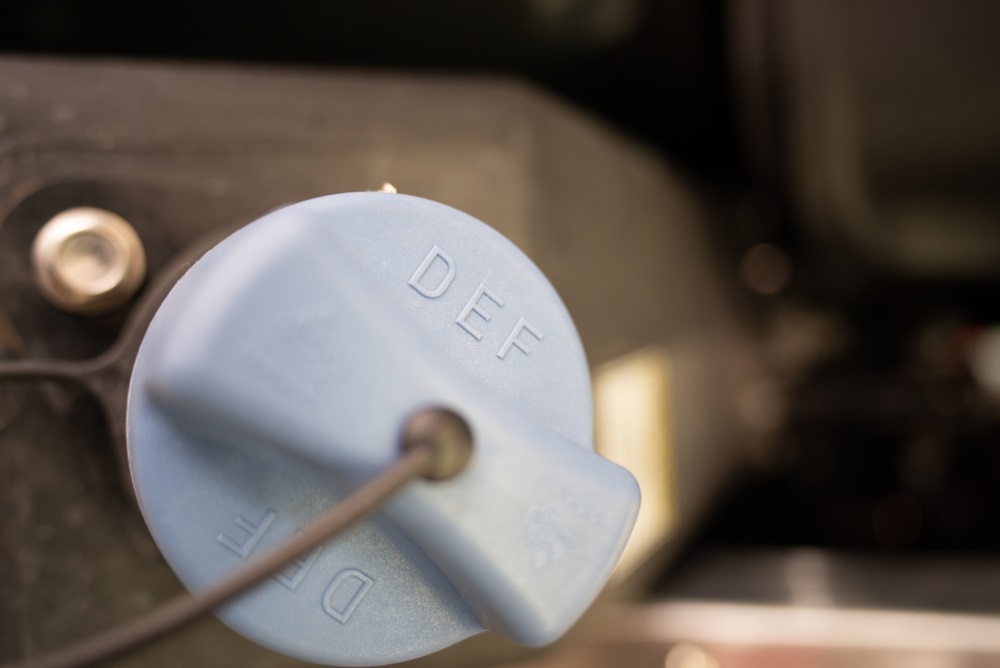
Moisture
Exposure to humidity and condensation can allow water to mix into the DEF solution. Too much water dilutes the urea concentration, reducing its effectiveness.
Dirt and Debris
Particles from dust or other contaminants entering the DEF tank can clog filters and damage components. Keeping the fill cap sealed prevents contamination.
High Temperatures
DEF solutions start to break down when exposed to temperatures above 90°F for extended periods of time. The urea begins decomposing into ammonia, which makes the solution ineffective.
Prolonged heat exposure, such as leaving DEF in direct sunlight or hot environments, will accelerate the degradation rate. The solution may obtain a strong ammonia odor or change to a milky white color.
Age and Long-term Storage
Even unopened and properly stored DEF has a usable life of up to 2 years before the urea concentration drops too low. Degraded DEF can lead to blocked injectors, emissions control failures, and CEL warning lights in vehicles.
Regularly checking DEF quality and avoiding contamination is key to maintaining its effectiveness. Replacing degraded DEF ensures optimal emissions system performance.
Replacing Degraded DEF
Diesel exhaust fluid (DEF) has a limited lifespan and will eventually degrade. If left unchanged, degraded DEF can cause serious issues with your vehicle’s emissions system. When DEF goes bad, the only way to restore proper function is to replace the contaminated fluid completely.
First, drain the DEF tank and flush the lines with distilled water. It’s important to use distilled water rather than tap water, which contains minerals that can leave deposits. Drain the tank as much as possible, then run distilled water through the lines until the fluid runs clear.
You may also need to replace any contaminated hoses, valves, sensors, or injectors. Degraded DEF can leave behind crystallized urea deposits that clog components. Check with your mechanic to identify any parts that need replacing.
Once the system has been thoroughly flushed, fill the tank with new DEF fluid. Use a reputable brand that meets ISO 22241 specifications. Adding fresh DEF will restore the emissions system to full functionality.
In the future, check DEF levels regularly and top off the tank before the fluid expires. Proper maintenance is key to avoiding degraded DEF buildup. Replacing contaminated fluid and components can be costly, so staying on top of DEF quality will save you headaches.
DEF Warning Signs
Knowing when your diesel exhaust fluid may be low or contaminated can prevent engine and emissions system damage.
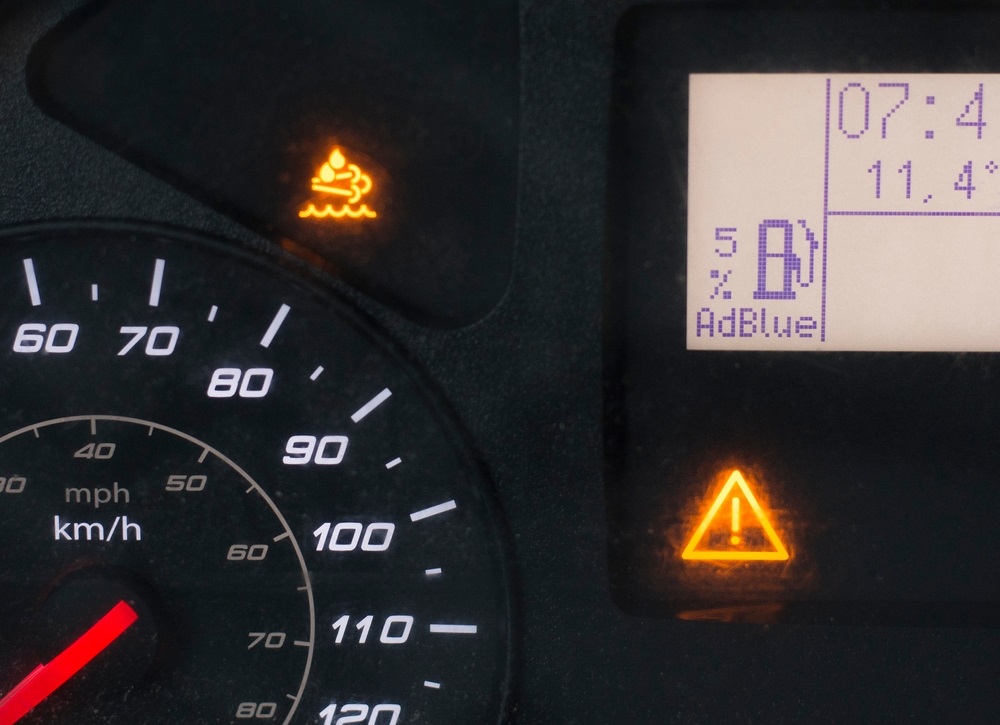
Here are some key signs that your DEF levels or quality may need attention:
Dashboard Warnings
Most diesel vehicles have a DEF gauge, low-level warning light, or check engine light that will illuminate if the DEF tank runs low or the fluid becomes contaminated. Don’t ignore these warnings, as driving with low or contaminated DEF can lead to serious issues.
Lack of DEF Consumption
Monitor your DEF usage over time. Drastic decreases in consumption rates likely mean you have a DEF issue. Healthy DEF consumption varies but is around 2-3% of diesel fuel usage.
Failing Emissions Tests
Contaminated or low DEF can cause your vehicle to fail emissions testing. If your diesel vehicle suddenly can’t pass, DEF problems may be the culprit.
Poor Fuel Economy
DEF helps your engine burn fuel more efficiently. So, if your MPG drops significantly, it could be due to insufficient or contaminated diesel exhaust fluid.
Diesel owners can avoid DEF problems and maintain proper emissions system function by paying attention to these signs. Let the warning lights be your guide, and act promptly to test, replenish, or replace your DEF as needed.
Frequently Asked Questions
You asked, we answered:
What Is The Shelf Life Of Diesel Exhaust Fluid (DEF)?
DEF can last up to 2 years when stored in a cool, dry place away from direct sunlight.
Can Extreme Temperatures Affect The Lifespan Of DEF?
Yes, exposure to extreme heat or freezing temperatures can degrade DEF quality and reduce its lifespan.
How Can I Tell If DEF Has Gone Bad?
Look for changes in color or the presence of particles, which indicate contamination or degradation.
Does The Vehicle’s Usage Rate Affect How Long DEF Lasts?
Yes, more frequent use of the vehicle will lead to quicker consumption of DEF, but it does not affect the fluid’s shelf life when stored properly.
In Conclusion
In conclusion, the lifespan and effectiveness of Diesel Exhaust Fluid (DEF) are crucial for maintaining the performance and compliance of modern diesel engines with stringent emissions regulations. Proper storage of DEF between 10°F and 90°F is essential to prevent degradation caused by extreme temperatures. Regular monitoring for contamination and degradation, as well as timely refilling, are key to ensuring the DEF system functions optimally. Understanding DEF consumption rates and being vigilant about warning signs can help prevent potential issues. By adhering to best practices for DEF storage, handling, and maintenance, diesel vehicle owners can significantly reduce nitrogen oxide emissions, contributing to a cleaner and healthier environment. To get more information on DEF and the best DEF products for your truck, get in touch with Azure Chemical today.

